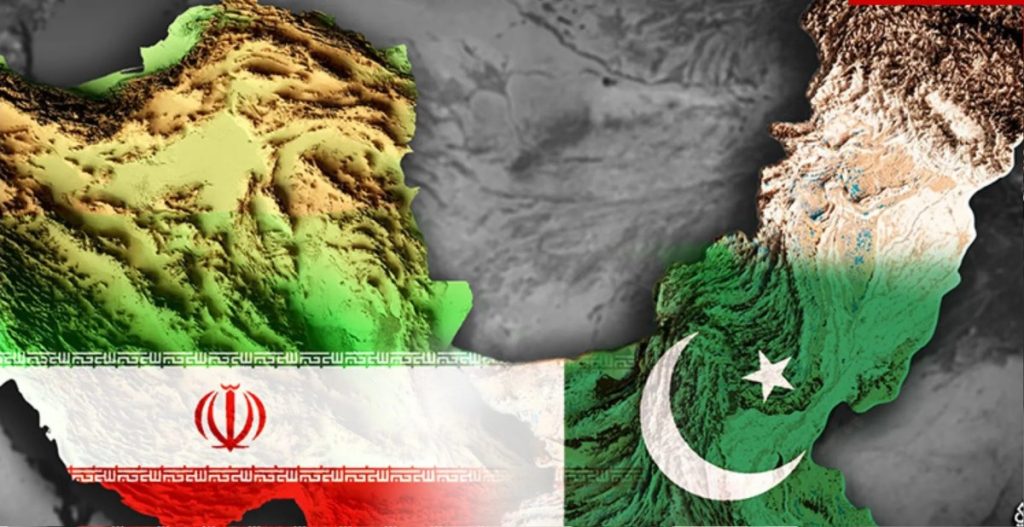Context:
In the wake of initial tensions and military engagements, Iran and Pakistan successfully steered the situation towards de-escalation, placing a premium on dialogue and cooperation.
Background
- The recent conflict between Iran and Pakistan is mainly driven by the presence of separatist militant groups operating on both sides of their shared border.
- These groups, such as Jaish al-Adl and the Baluch Liberation Army, have carried out attacks against Iranian and Pakistani targets, respectively.
- Both countries accuse each other of providing safe havens and support for these groups, which they consider terrorists.
- The situation escalated when Iran launched airstrikes on Pakistani territory on January 16, 2024, killing two children.
- Pakistan retaliated with its airstrikes on Iranian territory on January 18, 2024, killing at least nine people.
- This was the first time that the two neighbours exchanged cross-border strikes, raising the risk of a wider regional conflict.
Phase of Cooperation
- Before the Islamic Revolution of Iran in 1979, both countries were aligned with the United States.
- Both were part of the Baghdad Pact (later CENTO), a military alliance.
- During the wars of 1965 and 1971 between India and Pakistan, Iran provided material and weapons support to Pakistan.
Points of differences between both nations
- Sectarian Conflict: Pakistan, a predominantly Sunni country, clashed with Iran’s Shiite regime that came to power under Ayatollah Khomeini.
- Geopolitical Rift: Iran became an adversary of the U.S. after 1979, while Pakistan allied with the U.S., especially after the 9/11 attacks and the ensuing “War on Terror”.
- Revolutionary Ambition: Iran’s foreign policy, aimed at spreading the Islamic revolution, alienated its Arab neighbours, resulting in a split in regional interests.
- Afghanistan Dispute: Iran supported the Northern Alliance against the Taliban in Afghanistan, a group that Pakistan had helped to form, increasing the friction.
The Balochistan Dilemma Issue:
- Common Heritage: The Baloch people, who live on both sides of the Iran-Pakistan border, have strong cultural, ethnic, and linguistic bonds.
- Oppression and Dissent: Baloch communities in both countries have been oppressed, leading to separatist movements.
- Trans-Border Rebellion: Baloch rebels move across the porous border, attacking military and civilian targets, worsening relations.
- Variety in Rebel Groups: Baloch rebels in Iran often have religious ties, while those in Pakistan favour secular ethno-nationalism.
Reconciliation Efforts
- Benazir Bhutto’s Trip: Prime Minister Benazir Bhutto called Iran “a friend, a neighbour, and a brother in Islam” during her trip to Tehran in 1995, stressing cooperation and lamenting U.S. sanctions.
- Zardari’s Period: Asif Ali Zardari’s presidency increased cooperation with Iran, especially in trade and energy, but Sunni-Shiite conflicts continued.
- Nawaz Sharif’s Change: Nawaz Sharif, after becoming Prime Minister in 2013, shifted Pakistan’s position away from Iran, enhancing ties with Arab allies and abandoning the Iran-Pakistan gas pipeline project.
Potential Impact of Iran-Pakistan De-Escalation on India:
Positive Impacts:
- Reduced Regional Tensions: A stable Iran-Pakistan relationship could contribute to a more peaceful South Asian region, alleviating security concerns for India along its western border and allowing for increased attention to other regional priorities.
- Improved Trade and Transit: De-escalation may facilitate economic collaboration between Iran and Pakistan, benefiting India through enhanced access to Central Asia and the Middle East via the Chabahar port. This could open up new trade and transit opportunities for Indian businesses.
Potential Challenges:
- Lingering Mistrust: Despite recent de-escalation, historical tensions and mistrust between Iran and Pakistan might persist, posing challenges to maintaining a stable and cooperative relationship. This could impact India’s efforts to build strong, independent relations with both countries.
- Proxy Conflicts: Historical accusations of supporting militant groups in each other’s territories may resurface, potentially destabilizing the region. India could be drawn into such conflicts, affecting its regional stability and security.
- Great Power Dynamics: The involvement of China in the region could complicate India’s attempts to balance relations with Iran and Pakistan. Navigating these geopolitical dynamics is crucial for India to preserve its strategic autonomy.
Role of Global/Regional Powers in the Iran-Pakistan De-Escalation:
India:
- Competition for Regional Influence: The enduring rivalry between India and Pakistan extends to their relations with Iran. India’s efforts to strengthen ties with Iran might be seen by Pakistan as a challenge to its regional influence.
China:
- Common Interests: China has become a crucial partner for both Pakistan and Iran, driven by shared concerns about U.S. dominance in the region. Cooperation on counter-terrorism and economic initiatives, especially within the Belt and Road Initiative (BRI), has strengthened ties between the three nations.
- Mediation Efforts: China plays an active role in mediating between Pakistan and Iran.
USA:
- Competing interests: The US has competing interests in the region, aiming to counter Iranian influence and maintain its alliance with Pakistan.
Russia:
- Balancing act: Russia has close ties with both Iran and Pakistan, similar to China. It likely played a role in encouraging de-escalation.
Way forward
- India’s strategic path post-Iran-Pakistan de-escalation involves deftly navigating challenges and opportunities. While aiming for enhanced regional cooperation and trade, India must be mindful of lingering mistrust and potential proxy conflicts.
- Leveraging its investment in Chabahar port, India can bolster economic ties and open avenues to Central Asia.
- Maintaining strategic autonomy is crucial, balancing relations with Iran and Pakistan while proactively addressing historical grievances to build sustainable cooperation.
- Engaging with global players like China and the US diplomatically and mitigating regional conflicts will contribute to a more stable South Asia.

